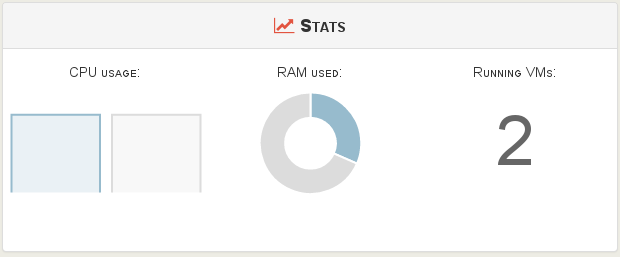Xen Orchestra 3.8
Release often, release faster: that's our motto this year. And we spent some time do give you a smoother experience when upgrading, with those objectives:
- Avoid appliance re-download for each new version
- Avoid any manual data migration on your side
- Ability to rollback to a previous release if anything goes wrong
TL;DR again? Download it now!
XOA updater
Those previous requirements lead to those specifications:
- Include an updater in XOA
- Handle download of new Xen Orchestra versions
- Handle script migrations (e.g when the database structure changed)
- Handle updater self-update
- Handle rollbacks
Not trivial eh? But we made it, and this tool is currently in last test phase.
Basically, starting with the 3.8, each new version of Xen Orchestra can be delivered directly in your XOA Starter or Enterprise without more that calling xoa-updater, with that kind of output:
> xoa-updater
Checking new versions... ok.
New versions available:
- xoa-register 1.0.6
- xo-server-starter 4.0.1
- xo-web-starter 4.0.1
Downloading the new packages...
- xoa-register 100%
- xo-server-starter 100%
- xo-web-starter 100%
Stopping xo-server... ok.
Installing the new packages...
✔ xo-web-starter
✔ xoa-register
✔ xo-server-starter
Executing migration scripts...
✔ 1316027432511-migrate-redis-to-leveldb.js (1/2)
✔ 1316027432575-updating-acls.js (2/2)
Starting xo-server... ok.
For sure, we'll integrate something directly from the web interface, but this first step is really important.
So what does it means? More releases, more features directly in your XOA!
But... that's not the only new stuff in this 3.8!
ACLs with LDAP support for Xen Orchestra
With the Enterprise version, you can now plug your XOA to your LDAP directory:
- Put the LDAP info in the config file
- Log in with a LDAP user, if the user isn't already exists in the XOA database, it will be created on-the-fly without any rights
- An admin can now see the new user in XOA and give him permissions (or the admin role if needed)
That's all!
First charts
We also implemented first charts in host, pool and SR view:

They are dynamic, so you could see the RAM or space moving in live, like in this video:
Live metrics in a VM (like VM or CPU usage) need to get RRDs infos, but we are currently working on it, should be in the next update (3.9).
Disk management
The new disk panel in the VM view now gives you all this stuff:
- Add a new disk to your VM
- Attaching an existing disk
- Mount CD from the VM view
- Change disk order

In video:
Network management
Almost symetric than Disk management, you can now add a new network interface to your VM.

After clicking on "Create Interface", you'll have to fill the form, e.g selecting the network, MAC address and MTU:

